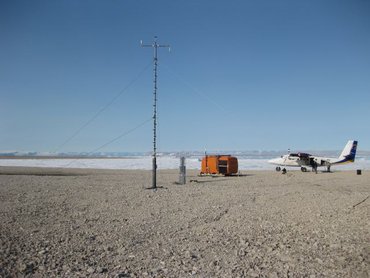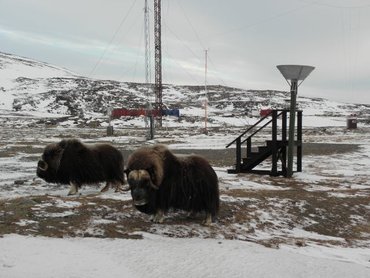Northeast Greenland glaciers in retreat
March 19, 2014
by Ruth Mottram
Danish scientists at DTU have observed the widespread retreat of glaciers in northeast Greenland which they explain with the help of DMI weather observations at Danmarkshavn and Henrik Krøyer Holme.
Led by scientist Shfaqat Abbas Khan at DTU-Space division of geodesy, the researchers show that increasing temperatures in north east Greenland in the early 2000s, related in part to reductions in sea ice, caused an increase in the rate of the calving of icebergs from several of the glaciers. This in turn has triggered an increase in flow speed and retreat of glacier fronts in a feedback process that has spread across a large part of the ice sheet in the north east. There are very few observations in the north east of Greenland so DMI has a unique dataset that can be used in climate research.
The north east of the Greenland ice sheet had been thought to be stable and relatively unaffected by climate change so projections of sea level rise have rarely included a large contribution from this region. “This study should help us to improve our models substantially” said Marianne Sloth Madsen a climate scientist and glacier modeller at DMI. “We have very few observations from the north east of Greenland and this study shows improving the calving processes in our models are vital to understanding the future of the ice sheet, especially in this region”.
The area studied includes about 16% of the ice sheet, twice as much as the famous Jakobshavn glacier which has shown an even higher retreat rate in recent years.
“DTU-Space are important partners in the polar portal project and this new research shows how powerful the combination of models, satellite observations and direct measurements are for really understanding the arctic climate and the effects on the Greenland ice sheet” continued climate scientist and polar portal coordinator Peter Langen.







